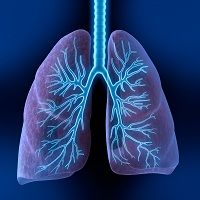Secondhand Factors in Asthma Not Significant in Overall Disease Improvement
Secondhand factors in asthma, such as environmental exposures like pets and secondhand smoke, are not significant in overall disease improvement.

While secondhand factors in asthma, such as environmental exposures like pets and secondhand smoke, have been suggested to impact disease control, a study conducted by Nationwide Children’s Hospital investigators and presented at the 2018 Annual CHEST Meeting in San Antonio, TX, suggests otherwise.
In their 3-year prospective cohort study, the team of investigators sought to evaluate the impact of environmental exposures in asthma control among children whose asthma is managed per NAEPP (EPR-3) guidelines.
Children enrolled in the study were first approved by the Institutional Review Board (IRB) and then referred by primary care physicians with the diagnosis of uncontrolled asthma; these children were then enrolled in the center since 2011. Per the National Asthma Education and Prevention Program (NAEPP) guidelines, these pediatric patients were also treated with asthma care.
Asthma questionnaires that included acute care need, symptom control, and Asthma Control Test (ACT) were completed by participating families at each visit, which was 3-6 months. Asthma control was also assessed at each visit.
At baseline and over time, data were compared between patients with and without exposure to secondhand smoking (cigarette smoking by caretakers like parents and grandparents) and between patients with or without exposure to pets like cats and dogs.
Mean, standard deviation, median, and interquartile range were used to measure the distribution of scores—depending on the normality of the data. Changes in asthma indicators were measured by the Poisson Mixed Effects Model over 3-6 month increments.; alpha level of significance was less than or equal to .05.
Ultimately, 395 children aged 2-17 years (median 3,9) were included in the sample, with the majority of children having a diagnosis of either mild persistent asthma (n=101, 26%) or moderate persistent asthma (n=265, 67%).
In 98 (25%) of the children, exposure to secondhand smoke was documented. Exposure to a pet (cat or dog at home) was recorded in 215 (55%) children.
Among the children with or without pet exposure or with or without secondhand tobacco exposure, no significant difference in demographics was recorded.
By 3-6 month follow-up visit, acute care need scores (hospital admissions, emergency department visits, urgent care visits, primary care visits, school days missed, short courses of oral steroids, and number of days requiring albuterol and mean percent predicted the forced expiratory volume in one second (FEV1), mean ACT and asthma symptoms (number of days with wheezing and nighttime cough) improved significantly (p,.001 for all). Throughout the 3-year follow-up, improvements persisted.
Covariation was measured through the inclusion of the 2 measured environmental exposures (secondhand cigarette smoke and/or animal exposure, such as cats and dogs).
From baseline, significant improvements were observed in both groups (P<.05), which persisted throughout the 3-year follow-up.
In asthma improvement over time, environmental exposures to secondhand smoke or animals were not significant covariates.
From their data, study authors concluded that environmental exposures to pets or secondhand smoke were not significant factors in overall asthma improvement over time once asthma guidelines were followed. Consequently, the team ruled better asthma control over time requires compliance with asthma guidelines.
The study, "Impact of Environmental Exposures (Secondhand Smoking and/or Pets) on Long-Term Asthma Control in Children," was presented at CHEST 2018.
Click here to sign up for more MD Magazine content and updates.
Related Coverage >>>
Women Lung Donors Less Likely to Receive Lung Protective Tidal Volumes
Therapy Disruption by Medicare Coverage Could Harm Asthma Control